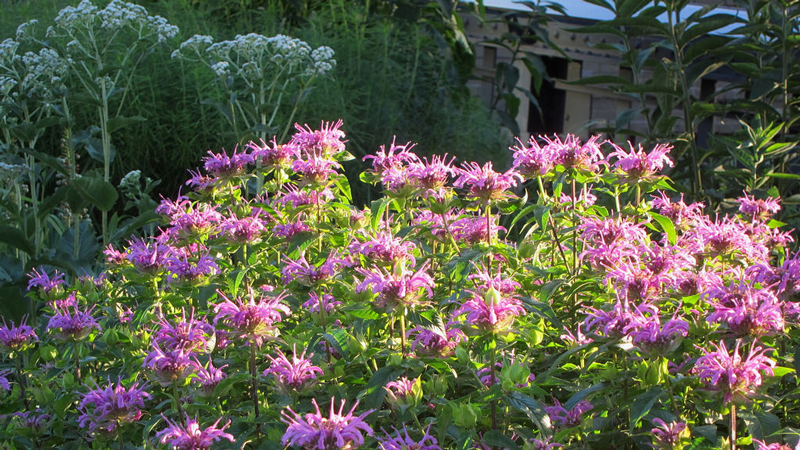This post is part of a series highlighting some of the best plants for pollinators from coast-to-coast. Drawing from our books 100 Plants to Feed the Bees, Gardening for Butterflies , and our Monarch Nectar Plant Guides.
Wild Bergamot
Monarda fistulosa
Wild bergamot is one of several plants also known by the common name of bee balm. Wild bergamot attracts a number of specialist bees, bumble bees, predatory wasps, hummingbirds, and hawk moths.
A small black sweat bee, Dufourea monardae, is a specialist of bee balm in the Midwest and Northeast. Researchers in mid-Atlantic states have recently observed sand wasps (Bicyrtes) using beebalm extensively for nectar. These wasps are voracious predators of brown marmorated stinkbug (Halyomorpha halys), a significant pest of orchards and vegetable crops. Wild bergamot was identified as a valuable monarch nectar plant in our research, and is suggested in our Monarch Nectar Plant Guide – Midwest and guides for other regions where it grows.


Wild bergamot is one of the easiest plants to start from seed, it can be planted on bare soil in spring without need of overwintering. It’s distinctive crown of tubular light pink or purple flowers stand atop short, sturdy stems from mid-summer through fall. Unlike other bee balms, wild bergamot maintains small colonies and is shorter in height than its taller and more aggressive cousins.
Native Range: Wild bergamot thrives in a wide range of soils, and can be found across most of the U.S. and Canada with the exception of California and Florida.
Best for: Long bloom period provides abundant resources for a diversity of bees and other pollinators.



